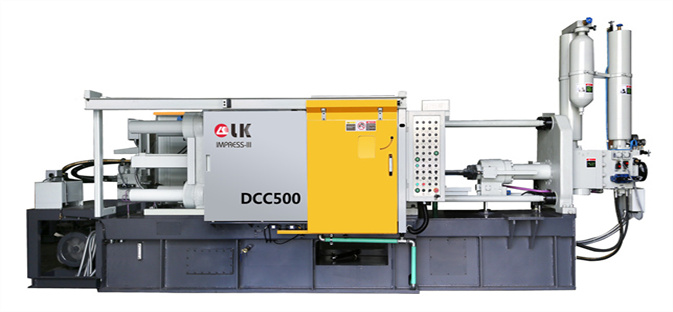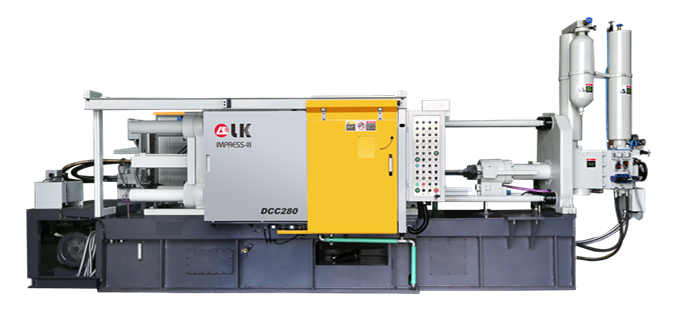What is die casting tool?
LK Die Casting Machine / 2024-06-12 17:17:59
In the field of modern industrial manufacturing, die-casting molds play a vital role. So, what exactly is a die-casting mold?

Die-casting molds, in simple terms, are special molds used for die-casting production. It is a key tool for injecting liquid or semi-liquid metal materials into the mold cavity under high pressure and high speed, and forming parts with specific shapes and sizes after cooling and solidification.
1. Die-casting molds are usually composed of multiple parts such as a cavity, core, pouring system, overflow system, cooling system, and ejection mechanism.
The cavity and core determine the shape and dimensional accuracy of the final die-casting. They need to have extremely high hardness, wear resistance, and corrosion resistance to ensure stable performance during repeated die-casting processes. The pouring system is responsible for smoothly and quickly introducing the molten metal into the cavity. The rationality of its design directly affects the filling effect of the molten metal and the quality of the die-casting. The overflow system is used to discharge the gas and excess molten metal in the cavity to avoid defects such as pores and shrinkage holes. The cooling system can effectively control the temperature of the mold to prevent the mold from overheating and affecting the service life and quality of the die-casting. The ejector mechanism ejects the die casting smoothly from the mold after it cools and solidifies.
2. Die-casting molds have many significant characteristics and advantages.
First, it can achieve high-precision and high-efficiency production, and the die castings produced have the advantages of precise size, smooth surface, and dense organization. Secondly, die-casting molds can produce parts with complex shapes and thin walls to meet various design requirements. Furthermore, die-casting molds are suitable for large-scale production, which can greatly reduce production costs. In addition, through reasonable mold design and process control, the mechanical properties and performance of die castings can also be improved.
3. The manufacturing process of die-casting molds is complex and delicate.It requires mold design, mold processing, heat treatment, assembly, and other links.
In the mold design stage, the designer needs to fully consider the shape, size, material properties, die-casting process, and other factors of the product to formulate a reasonable mold structure and parameters. Mold processing requires the use of various advanced processing technologies and equipment, such as CNC machining, EDM, wire cutting, etc., to ensure the accuracy and quality of the mold. Heat treatment is an important means to improve the hardness and wear resistance of the mold. The mold can achieve good performance through an appropriate heat treatment process. The assembly stage requires that each component be assembled into a complete mold in strict accordance with the design requirements, and debugged and inspected to ensure that the mold can operate normally.
4. In practical applications, die-casting molds are widely used in many industries such as automobiles, aerospace, electronics, and machinery.
For example, in the automotive industry, die-casting molds are used to produce key components such as engine cylinder blocks, cylinder heads, and gearbox housings; in the aerospace field, they are used to produce aircraft parts; in the electronics industry, they are used to produce shell products such as mobile phone shells and computer shells. With the continuous advancement of science and technology and the continuous development of industry, the requirements for die-casting molds are getting higher and higher. In the future, die-casting molds will develop in a more intelligent, automated, and precise direction to meet the increasingly complex needs of industrial production.

In short, die-casting molds are an indispensable and important tool in modern industrial manufacturing, and their development and application are of great significance to promoting industrial progress and improving product quality.
By deeply understanding the concept, composition, characteristics, manufacturing process, and application fields of die-casting molds, we can better understand and utilize this important industrial technology and make greater contributions to the development of industry.
Contact LK Egypt ZAZ to learn more info about the die-casting machine.
Phone: +86 13598704163
Email: jack@zazmae.com https://www.zazdiecasting.com/
#die cast tooling
#trivalent chromate
#rapid prototype casting
#a360 aluminum
#aluminum caster
#aluminum prototype
#ideal 55 slider parts
#density of aluminum kg/mm3
#magnesium sheet metal
#parts of a metal gate
#subcontracting of screw machining for the luxury sector
#wall aluminum
#die casting tooling
#tooling for die casting
#density of aluminium in kg mm3
#clear chromate
#es casting metals
#gating material
#prototype aluminum
#sigma castings
#subcontracting of screw-machining for household appliances
#we squeeze to please machine
#aluminium gravity die casting
#aluminum part
#aluminum rapid prototyping
#nickel casting
#plunger tip for die casting machine
#rapid prototyping aluminium
OTHER CONTENT
-

2024-09-19 14:16:15 LK Cold Chamber Die Casting Machine DCC900 Locking Force: 9000KN Die Height: 400-1000mm Space Between Tie Bars: 930x930mm Shot Weight: 13.5Kg Casting Area Max:2250c㎡
More -

2024-09-19 14:11:06 LK Cold Chamber Die Casting Machine DCC280 Locking Force: 2800KN Die Height: 250-650mm Space Between Tie Bars: 560x560mm Shot Weight: 2.9Kg Casting Area Max:700c㎡
More -

2024-09-19 10:23:07 LK Cold Chamber Die Casting Machine DCC580 Locking Force: 5000KN Die Heigh: 350-850mm Space Between Tie Bars: 760x760mm Shot Weight: 6.9Kg Casting Area Max:1250c㎡
More -

2024-09-19 10:11:20 LK Cold Chamber Die Casting Machine DCC400 Locking Force: 4000KN Die Height: 300-700mm Space Between Tie Bars: 669x669mm Shot Weight: 4.7Kg Casting Area Max:1000c㎡
More

